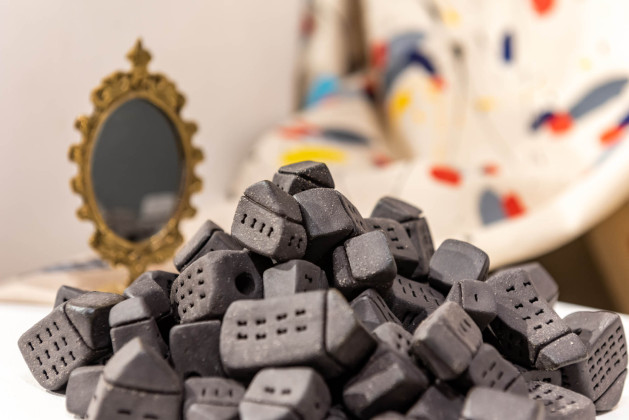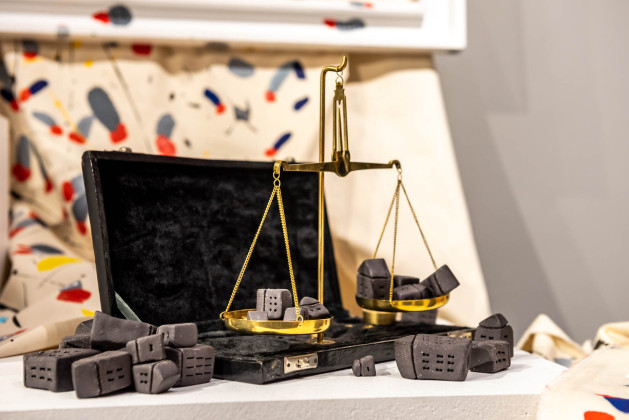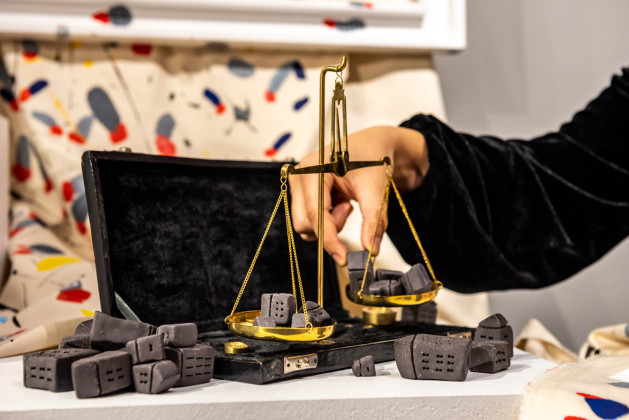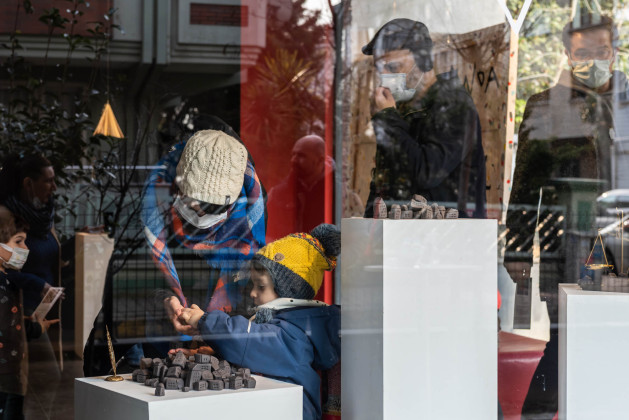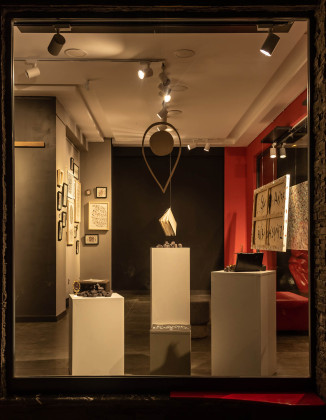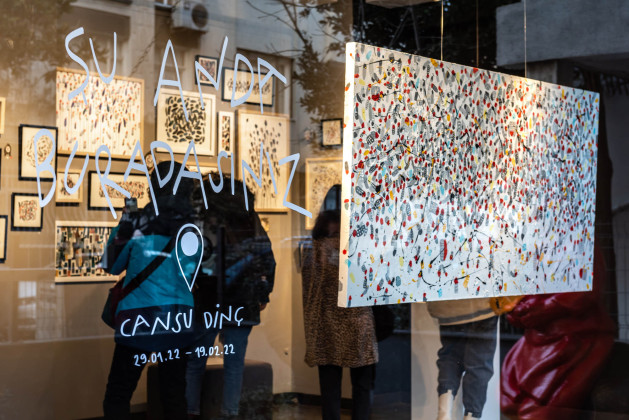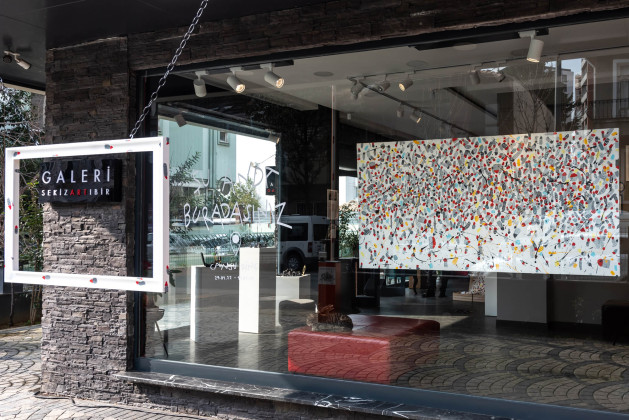Gram Space
Can you measure space?
Note from the author: "Gram space" was an installation I created about a year ago as part of my solo exhibition while searching for an answer to this question. Afterwards, it evolved into a new project with Hacer Bozkurt and we have been preparing for a series of articles together with the XXI team and many partners. In this process, we set out with the intention of opening a space about the housing crisis we are in. The week we intended to start the process, on the 6th of February, we opened our eyes to the earthquake centred in Kahramanmaraş and affecting many provinces. Maybe it is still too early to talk about what has changed in our lives. But we are definitely in a period when we want to ask this question even louder. That is why we did not want to change a single comma in this text I wrote before the earthquake.
Gram space asks the viewer this question through ceramic "house" sculptures that are large enough to fit in a palm. Based on the archetype of the house that almost everyone has pictured in childhood, each ceramic house is different from the others. And they form a selection nested in a pile. It intends to make the viewer experience this question through a pair of scales.
The viewer weighs the houses on the pair of scales in the installation, finds the appropriate weights, and tries to balance the scales. It is repeated over and over again, even to buy only a house. One is dropped and picked up another. Then it is changed to the ingot. The monochrome and fashioned sculptures look identical but have different weights and shapes. The more time is spent on the installation, the more noticed. And in the end, the viewer leaves the gallery with 13 gram, 27 gram, 92 gram houses, though just barely. The pile that has been left behind is diminishing. Each collection is unique because it is formed by the decision and initiative of the viewer. And sometimes the viewer leaves the houses that they weighed on the scales back on the pile. The selection reproduces its meaning. Like the world, we live in.
But do we have even this much initiative in the cities we live in today, in the houses we wake up in the morning?
"The problem isn’t so much to find out how we have reached this point, but simply to recognize that we have reached it, that we are here," says George Perec in Species of Spaces and Other Pieces.1
We are
Here
Right now.
I ask again.
Can you measure space?
I reply.
They measure them. I know they sell them in kilograms and parcels.
Yet can space be measurable just because someone is weighing, labeling, and selling it instead of us?
A year has passed since the exhibition "You are here right now"2 and the installation "gram space".
The sculptures of the house in our palm were replaced again and again, creating other meanings.
10 houses from the installation, weighing 245 g, hit the road together with Hacer Bozkurt, architect and photographer. During her journey to Europe last summer, she photographed the temporary installations, she made in various places in Wuppertal, Dusseldorf, Antwerp, Utrecht, and Brussels, and finally placed the houses permanently on the Berlin Wall in Berlin.
The trace left by one of the most important displacements in the history of the world made the "gram space" its own space.
I also would like to ask how would the balance of the scales change if each user's connection with the space was positioned as a criterion for defining the value of the spaces?
I'd like to forget for a moment the meters, the locations, the damp walls, the landlords and renters. It's hard.
We're all on the edge of the couch with our little ceramic houses in the palm of our hands.
But I ask again and again and I'm not really looking for a response.
Can you measure space?
References
1 Species of Spaces and Other Pieces, George Perec, Penguin Classics
2 Gram space installation was exhibited at 8+1 Gallery in Istanbul between 29 January - 19 February 2022 as part of the exhibition "You are here now".
 27.04.2023
27.04.2023




